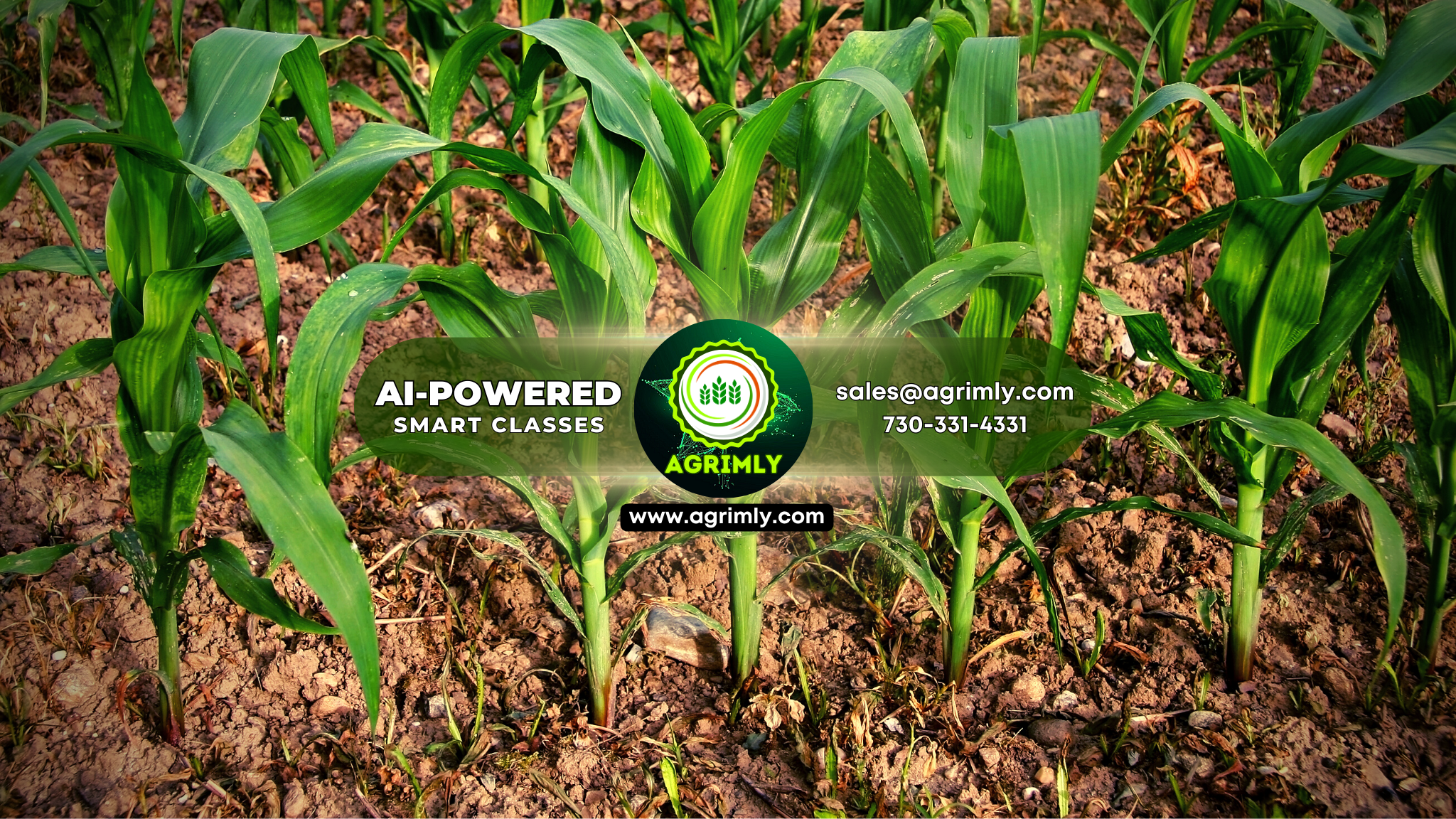Foundation Course - Teaching Outline for Agriculture For CUET UG ICAR Exam: 50 lectures, 6 Month
Unit-1: Agrometeorology, Agronomy, Crop Production , Soil Management
Agrometeorology:
- Elements of Weather-rainfall, temperature, humidity, wind velocity, sunshine
- Weather forecasting, climate change in relation to crop production.
Crop Production Principles:
Introduction:
- Targets and achievements in foodgrain production in India since independence and its future projections
- Sustainable crop production, commercialization of agriculture and its scope in India.
- Classification of field crops based on their utility-cereals, pulses, oils seeds, fibre, sugar and forage crops.
Soil, Soil fertility, Fertilisers and Manures:
- Soil, soil pH, Soil texture, soil structure, soil organisms, soil tilth, soil fertility and soil health.
- Essential plant nutrients, their functions and deficiency symptoms.
- Soil types of India and their characteristics.
- Organic manure, common fertilizers including straight, complex, fertilizer mixtures and biofertilizers; integrated nutrient management system.
Irrigation and Drainage:
- Sources of irrigation (rain, canals, tanks, rivers, wells, tubewells).
- Scheduling of irrigation based on critical stages of growth, time interval, soil moisture content and weather parameters.
- Water requirement of crops.
- Methods of irrigation and drainage.
- Watershed management
Weed Control:
- Principles of weed control
- Methods of weed control (cultural, mechanical, chemical, biological and Integrated weed management).
Crop Production Practices: Seed bed preparation, seed treatment, time and method of sowing/planting, seed rate; dose, method and time of fertilizer application, irrigation, interculture and weed control; common pests and diseases, caused by bacteria, fungi virus and nematode and their control, integrated pest management, harvesting, threshing, post harvest technology: storage, processing and marketing of major field crops-
- Cultivation of Cereal Crops like Rice, wheat, maize, sorghum, pearl millet
- Cultivation of Pulse Crops like pigeon-pea, gram
- Cultivation of Oilseed Crops like Groundnut, mustard
- Cultivation of Commercials like sugarcane, cotton and berseem.
Unit: Genetics & Plant Breeding, Biochemistry, Microbiology:
- Cell and its structure, cell division-mitosis and meiosis and their significance
- Organisation of the genetic materials in chromosomes, DNA and RNA
- Mendel’s laws of inheritance. Reasons for the success of Mendel in his experiments, Absence of linkage in Mendel’s experiments.
- Quantitative inheritance, continuous and discontinuous variation in plants.
- Monogenic and polygenic inheritance.
- Role of Genetics in Plant breeding, self and cross-pollinated crops,
- Methods of breeding in field crops-introduction, selection, hybridization, mutation and polyploidy, tissue and cell culture.
- Plant Biotechnology-definition and scope in crop production.
Biochemistry:
- pH and buffers, Classification and nomenclature of carbohydrates; proteins; lipids; vitamins and enzymes.
Microbiology:
- Microbial cell structure, Microorganisms- Algae, Bacteria, Fungi, Actinomycetes, Protozoa and Viruses.
- Role of microorganisms in respiration, fermentation and organic matter decomposition
Unit: Livestock Production
Scope and importance:
- Importance of livestock in agriculture and industry, White revolution in India.
- Important breeds Indian and exotic, distribution of cows, buffaloes and poultry in India.
Care and management:
- Systems of cattle and poultry housing
- Principles of feeding, feeding practices.
- Balanced ration-definition and ingredients.
- Management of calves, bullocks, pregnant and milch animals as well as chicks crockrels and layers, poultry.
- Signs of sick animals, symptoms of common diseases in cattle and poultry, Rinderpest, black quarter, foot and mouth, mastitis and haemorrhagicsepticaemiacoccidiosis, Fowl pox and Ranikhet disease, their prevention and control.
Artificial Insemination:
- Reproductive organs, collection, dilution and preservation of semen and artificial insemination, role of artificial insemination in cattle improvement.
- Livestock Products: Processing and marketing of milk and Milk products.
Unit: Horticulture
- Importance of fruits and vegetables in human diet, Crop diversification & processing Industry.
- Orchard-location and layout, ornamental gardening and kitchen garden.
- Planting system, training, pruning, intercropping, protection from frost and sunburn.
- Trees, shrubs, climbers, annuals, perennials-definition and examples.
- Propagation by seed, cutting, budding, layering and grafting.
- Cultivation practices, processing and marketing of Fruits: mango, papaya, banana, guava, citrus, grapes.
- Cultivation practices, processing and marketing of Vegetables: Radish, carrot, potato, onion, cauliflower, brinjal, tomato, spinach and cabbage.
- Cultivation practices, processing and marketing of Flowers: Gladiolus, canna, chrysanthemums, roses and marigold.
- Principles and methods of fruit and vegetable preservation.
- Preparation of jellies, jams, ketchup, chips and their packing.


